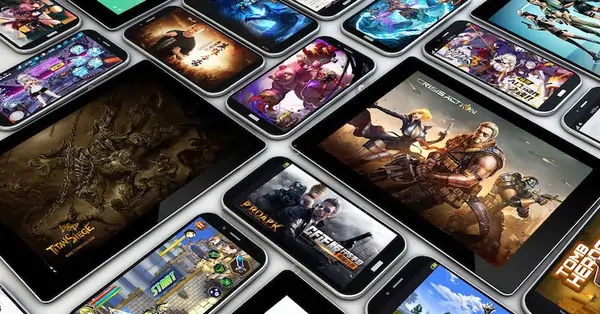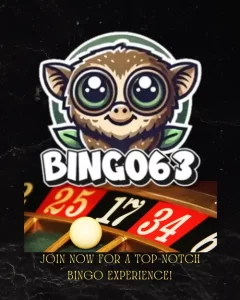


Table of Contents
Introduction to Mobile Gaming
Mobile gaming refers to playing video games on smartphones, tablets, and other mobile devices. It has seen tremendous growth over the past decade, fueled by advancements in mobile technology, increased smartphone penetration, and the rise of free-to-play games.
The history of mobile gaming can be traced back to the late 1990s when Nokia released the first handheld mobile game called Snake. However, mobile gaming truly took off after Apple launched the App Store in 2008 which allowed anyone to develop and publish mobile games. Other app stores like Google Play soon followed. This opened up mobile gaming to indie developers and smaller studios.
Now mobile gaming generates over 50% of global game revenues, surpassing console and PC gaming. There are over 2.5 billion mobile gamers worldwide in 2020, and the mobile games market is projected to reach $116 billion by 2024. Casual gaming is the most popular genre, but core gaming has also grown significantly.
In the Philippines, over 60 million Filipinos play mobile games as of 2021. Mobile gaming penetration is at 57%, higher than the global average of 45%. Locally developed mobile games like Mobile Legends: Bang Bang have gained immense popularity in the country. The growing smartphone and mobile internet penetration provides a promising outlook for the future of mobile gaming in the Philippines.
Popular Mobile Game Genres
Mobile games span a wide range of genres to appeal to diverse audiences. Some of the most popular genres include:
Action Games
Action games emphasize combat, reflexes, and reaction speed. They feature high-energy gameplay with lots of explosions, fighting, shooting, and fast maneuvers. Popular action titles include the Call of Duty, PUBG Mobile, and Asphalt series.
Strategy Games
Strategy games challenge players to think ahead and plan tactics to overcome opponents. They involve managing resources, building structures, and commanding armies. Well-known strategy games include Clash of Clans, Rise of Kingdoms, and Plague Inc.
Puzzle Games
Puzzle games test logic, word skills, and problem-solving abilities. They involve manipulation of game pieces, words, or numbers to solve challenges. Top examples are Candy Crush Saga, Words with Friends, and Tetris.
Role-Playing Games (RPGs)
RPGs immerse players in fantasy worlds where they control a central character and influence an unfolding narrative. RPGs allow high levels of customization and progression. Hit RPG franchises include Final Fantasy, Pokemon Go, and Genshin Impact.
Sports Games
Sports games simulate real-world athletic events like football, basketball, or extreme sports. They emphasize realistic gameplay physics and rules. Leading sports titles include FIFA Soccer, Madden NFL, and NBA 2K.
The huge variety of mobile game genres ensures broad appeal and choices for all player tastes and preferences. Developers continue innovating new game types as the industry matures.
Read more about: Top 10 Legit Gaming
Top Mobile Gaming Apps in the Philippines
The Philippines has a thriving mobile gaming industry, with many popular titles coming from local developers. Here are some of the top mobile games in the country:
Mobile Legends: Bang Bang
Moonton’s multiplayer online battle arena game is hugely popular in the Philippines. Players battle 5v5 in short matches.
Call of Duty: Mobile
The mobile version of Activision’s hit shooter franchise has found an eager audience in the Philippines. Players engage in team-based combat across classic COD maps.
Rules of Survival
A battle royale game by NetEase Games that was one of the first to gain traction in the Philippines. Up to 300 players battle to be the last survivor on a map.
NBA 2K20
The mobile version of the hit NBA 2K basketball simulation franchise. Players can manage their own basketball careers in MyCareer mode.
ROS: Lost Vanguard
A mobile MMORPG by Archosaur Studio featuring mecha combat. The game has a strong following in the Philippines.
Marvel Super War
A MOBA from Marvel and NetEase featuring heroes and villains from Marvel comics. Teams of 5 heroes battle it out in arena combat.
Identity V
A horror-themed survival game from NetEase. Four players are hunters while one is the hunter, inspired by the Dead by Daylight formula.
Mobile Legends: Adventure
Another Moonton MOBA title featuring 5v5 ‘auto chess’ gameplay. Players strategically build a team of heroes to defeat opponents.
PUBG Mobile
The smash hit battle royale game that needs no introduction. The mobile version nicely captures the tense, strategic gameplay.
Dragon Nest M
The mobile version of the acclaimed PC MMORPG Dragon Nest with classic action combat adapted for mobile devices.
Ragnarok M: Eternal Love
A mobile remake of the classic Ragnarok Online MMORPG by Gravity Interactive. It retains the original game’s art style and job classes.
The Philippines has proven receptive to multiplayer competitive gaming on mobile, with many of the top titles falling into the MOBA or battle royale genres. Major developers like Moonton and NetEase have found success catering to Filipino players. There’s also nostalgia for classic PC franchises like Ragnarok Online that have been adapted to mobile. Locally developed games like Mobile Legends also resonate strongly with gamers. The future looks bright for mobile gaming in this rapidly growing market.
Mobile Gaming Demographics
Mobile gaming in the Philippines appeals to a wide range of demographics. However, there are some notable trends in terms of age, gender, and geographic distribution of mobile gamers.
Age Groups
The largest age group for mobile gaming is young adults 18-25, who make up around 40% of mobile gamers. This isn’t surprising given their high smartphone ownership rates. The next biggest groups are teenagers 13-17 at 30% and adults 26-35 at 20%. Together, these young demographics comprise the majority of mobile gamers.
However, middle-aged and older demographics are also actively involved in mobile gaming. Around 5% of mobile gamers are 36-50 years old. And a small but significant portion, around 3%, are 51 years and above. So while youth drive the growth, mobile gaming has expanded beyond just the young generations.
Gender Split
Historically, gaming has skewed male, but the gender gap has narrowed significantly with the rise of mobile gaming. Approximately 60% of mobile gamers are male and 40% female. This is a much more even distribution compared to other gaming platforms.
The types of games played do vary by gender, with action and sports games most popular among males. Females tend to prefer puzzle, board, and casual games. But the sheer variety of mobile games allows multiple genres to thrive among both genders.
Geographic Distribution
Mobile gaming’s reach extends nationwide, with high concentrations in urban areas as expected. Metro Manila and other major urban centers have very active mobile gaming communities. But substantial numbers also exist in secondary cities and rural areas where smartphone and mobile data access continue to grow.
Regional penetration mirrors broader digital trends, with above average adoption in more developed and tech savvy areas like Metro Manila, Central Luzon, Calabarzon and Central Visayas. But a national mobile gaming culture has clearly emerged and geographic barriers are diminishing. Even remote areas have tens of thousands of active mobile gamers.
Monetization Models
Mobile game developers have several options for monetizing their apps and generating revenue. Some of the most common models include:
Freemium
The freemium model allows users to download and play the basic game for free. Additional features, levels, virtual goods, or other enhancements are available through in-app purchases. This allows users to try out a game before spending money. It helps attract a large user base, while monetizing the most engaged players.
In-App Purchases
In-app purchases (IAPs) let users unlock more game content, virtual items, coins, gems, and other digital goods after downloading the app. IAPs provide additional revenue beyond the initial app download. They enable different monetization strategies, like offering a free trial before requiring payment.
In-Game Ads
Displaying in-game video or display ads is another way to generate revenue. Ads can be presented between gameplay sessions or levels. Rewarded video ads that provide in-game currency or bonuses for watching are also popular. Ad formats like playable ads and mini-games can increase user engagement.
Paid Apps
While most games are free-to-download, some premium games still charge an upfront cost. Paid apps monetize through the initial purchase price rather than through ads or IAPs. The advantage is they provide an ad-free experience. However, free-to-play models have largely replaced paid apps in mobile gaming.
Smartphone Market Share
The smartphone market in the Philippines is dominated by a handful of brands, with varying degrees of market share.
Leading Brands
- Samsung – The Korean tech giant Samsung leads the market with around 23% share. Its wide range of Galaxy smartphones at various price points have made it popular.
- Vivo – Chinese brand Vivo is a close second with around 22% market share. It has gained ground with its stylish designs and aggressive marketing.
- Oppo – Another Chinese player, Oppo holds around 21% share in the Philippines. Its mid-range Reno series and flagship Find X phones have struck a chord.
- Huawei – Despite its ongoing challenges, Huawei maintains a double-digit market share of 13% in the country. Its nova and P series phones still have appeal.
- Xiaomi – Rapidly growing Chinese brand Xiaomi has around 10% market share. Its value-for-money Redmi and Poco series are quite popular.
Operating Systems
- Android – Google’s Android OS completely dominates with more than 90% market share in the Philippines. Its flexibility and vast app ecosystem are key strengths.
- iOS – Apple’s iOS has a relatively modest share of around 9% in the country. But it enjoys loyalty among fans of iPhones and the Apple ecosystem.
- Other OS – The shares of other operating systems like Windows, KaiOS, etc. are negligible at less than 1% each. Android and iOS have cornered the smartphone OS market here.
Internet and Mobile Data Landscape
The Philippines has seen tremendous growth in mobile data usage over the past few years. Mobile data traffic grew by around 40% between 2017-2018 according to one report, and Filipinos now consume more mobile data on average than most of their Southeast Asian neighbors. This growth has been driven by the increasing affordability of smartphones and mobile data plans.
Mobile networks in the Philippines have also improved, with the entry of the third major player Mislatel, and continued investments by incumbents Globe and Smart. 4G/LTE availability has expanded rapidly, covering most urban areas and a growing number of rural communities. Average mobile internet speeds reached around 13 Mbps in 2019, though they still trail regional leaders like Singapore and Malaysia.
There are still challenges around providing fast, reliable mobile internet across the archipelago. Mountainous terrain makes network rollout difficult in some provinces, and mobile data remains expensive for many Filipinos compared to average incomes. But on the whole, mobile networks are improving and able to support the needs of most users. With fifth-generation 5G networks starting to be deployed, mobile internet performance should continue getting better in the years ahead.
Challenges and Opportunities
The mobile gaming industry in the Philippines faces some key challenges as well as exciting opportunities.
Piracy
Piracy is a major issue, with many opting to download cracked or pirated versions of games rather than paying for official versions. This significantly impacts revenues and makes it difficult for developers to recoup costs. Stricter regulation and enforcement of intellectual property laws is needed.
Discoverability
With millions of apps on the major app stores, standing out is a huge challenge. Gaining visibility and downloads is difficult without large marketing budgets. Creative guerilla marketing and influencer campaigns may help. Curated app stores focused on highlighting local developers could also assist discoverability.
Monetization
Monetization beyond upfront paid downloads remains challenging. Ad models provide limited revenue. New models like rewarded video ads, subscriptions, and in-app purchases offer hope but require careful execution. Partnerships with telcos and carriers on billing could provide growth.
Localization
Localizing games fully into Philippine languages and cultural contexts gives a major edge but requires investment. Partnerships with local celebrities and brands also helps local resonance. Many global titles see huge success after proper localization.
The opportunities lie in the fast-growing smartphone and mobile broadband market. As connectivity rises, gaming grows. Young demographics eager to play presents a long runway for mobile gaming to blossom.
Future Outlook
The future of mobile gaming in the Philippines looks very promising, with massive growth projected in users and revenue. Here are some of the key trends and innovations that will shape the future:
Projected Growth
- The mobile games market in the Philippines is expected to grow at a compound annual growth rate (CAGR) of 8.3% from 2022-2026.
- Mobile gaming revenue is projected to reach $300 million by 2026, up from $195 million in 2021.
- The number of mobile gamers is forecast to grow to 80 million by 2026.
- As smartphone and mobile internet penetration increases, the addressable market for mobile gaming will continue expanding.
Emerging Trends
- Cloud gaming services like Xbox Cloud Gaming will make high-end mobile gaming more accessible.
- Competitive/esports gaming on mobile will gain popularity, especially multiplayer online battle arena (MOBA) games.
- Cross-platform play where users on different devices like mobile, PC and consoles can play together will become more common.
- More tie-ins between mobile games and media franchises/celebrities to attract wider audiences.
Innovations
- 5G networks will enable richer multiplayer experiences, AR/VR mobile games.
- Artificial intelligence can enable more personalized gaming experiences and intelligent enemies.
- Improved graphics and processing power will make mobile games comparable to console quality.
- New payment models like battle passes and hybrid free-to-play/paid games will evolve.
- More sensors and haptics on phones will support innovative gameplay mechanics using gestures and touch.
With an expanding demographic base of users, faster networks and advancing phone capabilities, the future looks very bright for mobile gaming in the Philippines. Exciting times lie ahead as both users and developers embrace new trends and innovations in this space.
Conclusion
Mobile gaming has exploded in popularity in the Philippines due to the widespread adoption of smartphones and mobile data services. Key points covered in this article include:
- Mobile gaming revenues are expected to surpass $2 billion USD by 2025 in the Philippines. The market is growing rapidly.
- Action, adventure, puzzle, strategy, and casual games are among the most popular genres. Multiplayer games are also widely played.
- Top mobile game apps include Mobile Legends, Clash of Clans, Candy Crush Saga, PUBG Mobile, and Call of Duty Mobile. These showcase the diversity of mobile games.
- Demographics span all ages but tend to skew younger. Around 60% of mobile gamers in the Philippines are under 35 years old.
- Freemium and ad-supported models are most common for monetization. In-app purchases for virtual goods drive revenues.
- Android has the largest smartphone market share at nearly 90%, creating a huge platform for mobile gaming.
- Mobile data coverage and speeds continue improving, aided by telcos’ network investments. This enables online multiplayer gaming.
- Piracy, discoverability, and competition remain challenges. But the market outlook is strong given rising disposable incomes.
Mobile gaming has become a top form of entertainment in the Philippines and a major growth area. Its popularity seems poised to continue rising as device penetration increases and new innovative games are released. The accessibility and convenience of mobile gaming will ensure it plays a central role in the Filipino gaming industry for years to come.
You may also want to visit:
- Onlinelotto.ph
- swertresresulttoday.online
- PCSOlottoresult.online
- philboss.ph
- trustedcasino.ph
- 747life.live
- Supercasino.live
- peso888.info
Jackie is an accomplished content writer who specializes in lotteries and online gambling. She is an early adopter and likes experimenting with new gaming discoveries. She likes to share her expertise and counsel with others, especially when it comes to playing video games online.









